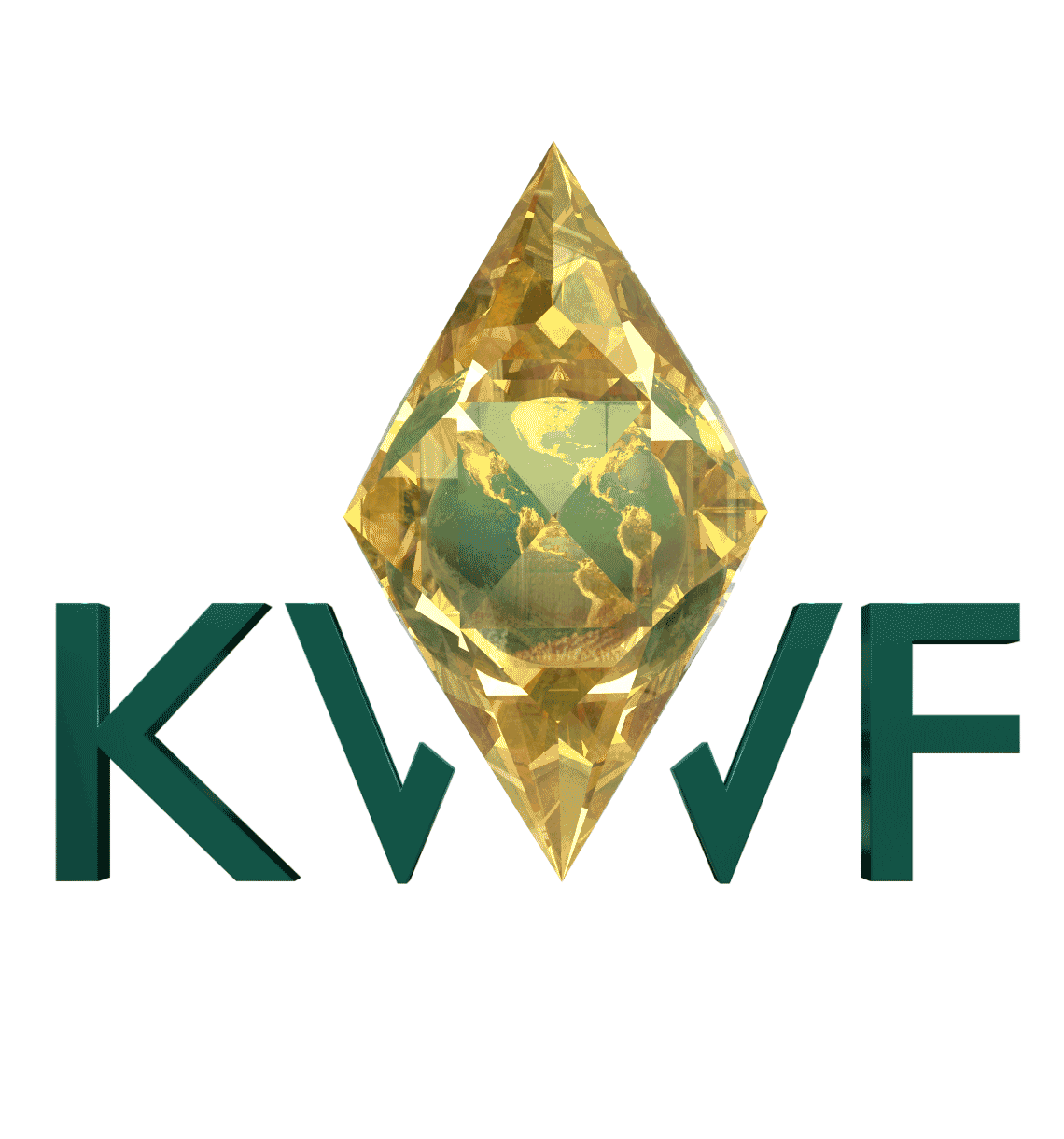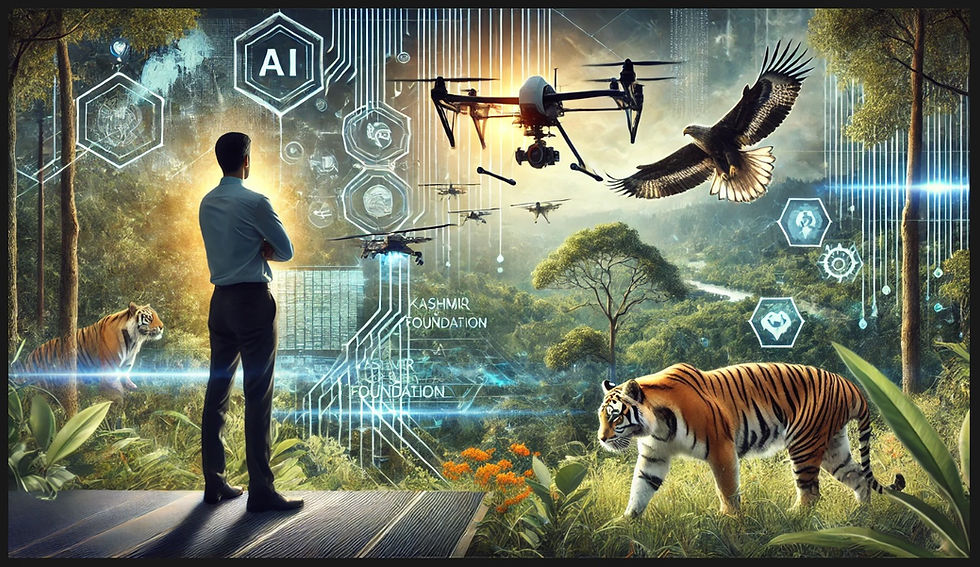Fires of Technology, Burning Bright
- Kashmir World Foundation

- Oct 21, 2020
- 7 min read
Updated: Dec 18, 2020
Out of the four elements, fire has always been regarded with ambivalence in various cultures, representing both destruction and rebirth. This duality is also found in nature. Forest fires can help in the woods’ natural replenishment by clearing competing vegetation from the forest floor and releasing seeds of certain tree species. The destruction begins when these fires grow out of control, harming the forests, animals, and people that live nearby.
In the Digital Age, technology has been paired with conservation, rapidly developing solutions to these problems and bringing experts in the field from all over the world to do so, bringing diversity to these innovations. Though environments vary across the world, we face many of the same issues: deforestation, poaching, and forest fires. Kashmir World Foundation involves these global conservation ideas in all of their projects and partners, including our Tree ID and wildfire projects - soon to be further developed with our Eagle Ray.
Mr. Jordan Hahn has been the CEO and Co-Founder of Overwatch Aero, a “company that combines revolutionary commercial technology with years of unmanned aerial experience to provide real-time intelligence to emergency responders”, for two years. His journey with unmanned aircrafts begins much earlier.
“I've always just been fascinated with aircrafts. If we traveled, we chose to travel by air, and I was always looking out the window”, says Hahn. “In high school, I wanted to do something engineering wise and so I chose to go to college for aerospace engineering and just really fell in love with it. Everything from propulsion to how aircraft fly down to the nitty gritty design aspects.”
Currently, Overwatch works in public safety regarding wildfires, and it was actually the inspiration for the company. “A couple years ago, I was at an airshow and saw that these unmanned systems were getting commercialized - they weren’t just these large, expensive military products, they had a reasonable price tag. We were in the middle of summer in fire-prone California and undergoing a lot of wildfire fighting efforts. We have neighbors who are firefighters who said they were being sent out to spend their whole shift trying to find the fire. It dawned on me, ‘hey we got this technology, and this need in the market. Let's try to go out and do that’. I started asking around to make sure the idea was viable and then me and a few business partners decided to branch out and give it a go.”
Dr. Burchan Aydin, an Assistant Professor at Texas A&M University-Commerce, also works in a similar scope. “My utmost interest is using Artificial Intelligence for wildfire detection. By detecting spot fires using AI, catastrophic fires could be prevented. AI is an emerging technology that evolved into our daily lives rapidly especially in the last decade. Just as any other technology, it could be used for good purposes, but also for bad purposes. The potential ways of using AI for the benefit of society and environment is fascinating.”

“I learned about KWF through their website. While I was researching drone workshops nationwide, KWF’s efforts for counter poaching by using drones and AI took my interest greatly.” Dr. Aydin also took a KWF Teachers Take Flight workshop and absolutely loved it.
“It is definitely worth it. I learned how to build a drone, how to fly it, and most importantly how to give this workshop to others. It was a life changing opportunity for me. The following years, I built 2 octocopters for academic research, and offered the Teachers Take Flight workshop for Dallas ISD, TX teachers in collaboration with KWF.”
Mr. Hahn’s approach to combating wildfires includes the use of Vertical Takeoff and Landing (VTOL) aircrafts, which he considers the best design for the projects. “All too often people bring in something that’s really cool but won’t work for the situation. In our case for our wildland firefighting efforts, you’re sending the aircraft to an area that's remote, that doesn't have a fixed landing site, runway operations, or infrastructure that supports UAV operations. If you are near an airport, you can take off there easily enough but you couldn't couldn't fly within Visual Line-of- Sight which is part of the current FAA regulations for flying systems. With a VTOL aircraft, you [can] be runway independent. For example, an aircraft we fly needs no more than two standard car parking spaces put together, and that vertical lift technology allows you to get up airborne and transition without the need of a runway. It really increases your operational flexibility and allows you to deploy the systems at a much greater area and climate than which you normally could.”
After Ms. Aliyah Pandolfi, Executive Director of Kashmir World Foundation, put Mr. Hahn and Dr. Aydin in contact with each other, they “partnered together to submit some grant proposals and develop some autonomous work” for “the Department of Commerce Measurement Science and Engineering Program”. “Wildfires starting with unnatural reasons cause massive environmental, societal, and economical burden”, says Dr. Aydin. “While I was testing fire-extinguishing spheres with firefighters, we noticed that they were very effective on extinguishing short grass fires. By the recommendation of these firefighters, I decided to test if they could also work for other surface vegetation that burned during wildfires.” The proposal includes a combination of the work and ideas of Mr. Hahn and Dr. Aydin. “It is aimed at managing spot fires by using AI, fire behavior modeling, fire extinguishing balls, and fixed-wing and octocopter UAVs”, Dr. Aydin explains. “In broad terms, the idea is detecting a spot fire [using fixed wing UAVs], predicting the behavior of the fire, and immediately sending a drone team to drop fire extinguishing agents.”
As an assistant professor, Dr. Aydin has gotten many of his students involved in his projects as well. “My research assistant has done some work on detection of spot fires from fire images. [In addition to wildfire detection], we are working on reforestation after wildfires. Some students have created an Arduino system that drops acorn seeds from the drone.”
The key to all of these approaches is real-time data integration and discrimination that combines air and ground-based assets. “Real time is really big. It's converting the data into information or intelligence depending which one you need to deliver”, explains Mr. Hahn. “We use a mesh network radio system. They’re these newer types of radios that are coming out that allow you to build together a mesh of radio or a data channel that you can allow any type of data to flow over. We have one on the aircraft, one on the Ground Control Station (GSC), and then we have a couple mobile devices or units that we can hand out to crews that then provide connectivity to them on the ground.”
“Our aircraft [that is flying] overhead has a link with our GCS which is 10 miles away. Then there's a fire crew that's on the other side of a ridge line that we can't see from our GCS but they can see the airplane. Well, now we can talk to that Ground crew as if they were just sitting with us or connected with us. So that really enables us to get sensor, data, and communication from folks on the ground, combine it with the video and create a multisource product. It’s not just one video feed, it’s a whole collective of information that you can put together to create situational awareness.”
Overwatch Aero also works with Esri, a Geographic Information System company, to improve this connection. “Basically, we have a web application where we provide a website for firefighters. They can view the live video stream and an updated map on their mobile phones that shows where the fire line is in real time. This allows firefighters to tune into the video and receive data directly on the ground.”
Like Dr. Aydin, Mr. Hahn is also a senior team advisor on the Eagle Ray project, KWF’s custom-designed blended-wing-body drone that will be used for its counter-poaching and conservation efforts. “I’ve been working with [Dr. Pandolfi, Kashmir Robotics’ Director,] for a long time and he mentioned some of KWF’s projects and asked if I’d be willing to work with them on the side,” Hahn says. “My passion for aircraft design and helping out where I can brought me to the project.”
“I served as one of the initial design engineers and aerodynamicists for the Eagle Ray project. Early on, my primary focus was on the initial sizing of the aircraft to meet the mission requirements of the time. The initial design was modeled closely after several of the existing blended wing body (BWB) designs being used for smaller unmanned aerial systems (UAS). Once we had the initial sizing requirements outlined, I focused on the detailed aerodynamic design including the airfoil shapes and wing geometry. This is always a fun process as you must balance the design to both optimize performance and handling characteristics (which are always a bit of a challenge with BWB). Fortunately, there were many experts on the Eagle Ray team that could assist with the design and refine some of the initial aircraft design parameters to improve both the performance and handling.”
“The main changes to the Eagle Ray project have been to (a) the mission requirements and (b) improvements in manufacturing techniques. For the mission requirements, these have slowly evolved over time and become more inline with KWF's efforts. This required several small modifications to the design parameters to ensure the aircraft was optimized for the new requirements. The evolution in manufacturing techniques, namely in the field of additive manufacturing, also drove design changes. These new techniques removed several of the traditional aircraft manufacturing constraints and opened up many new opportunities to improve the design.”
“My favorite part of the work I do with KWF and Overwatch Aero is the people, and their diversity. You have unmanned aircraft specialists and AI experts and conservationists from all over the world coming together with these projects. It’s what makes the product that much better and accessible.”





Comments